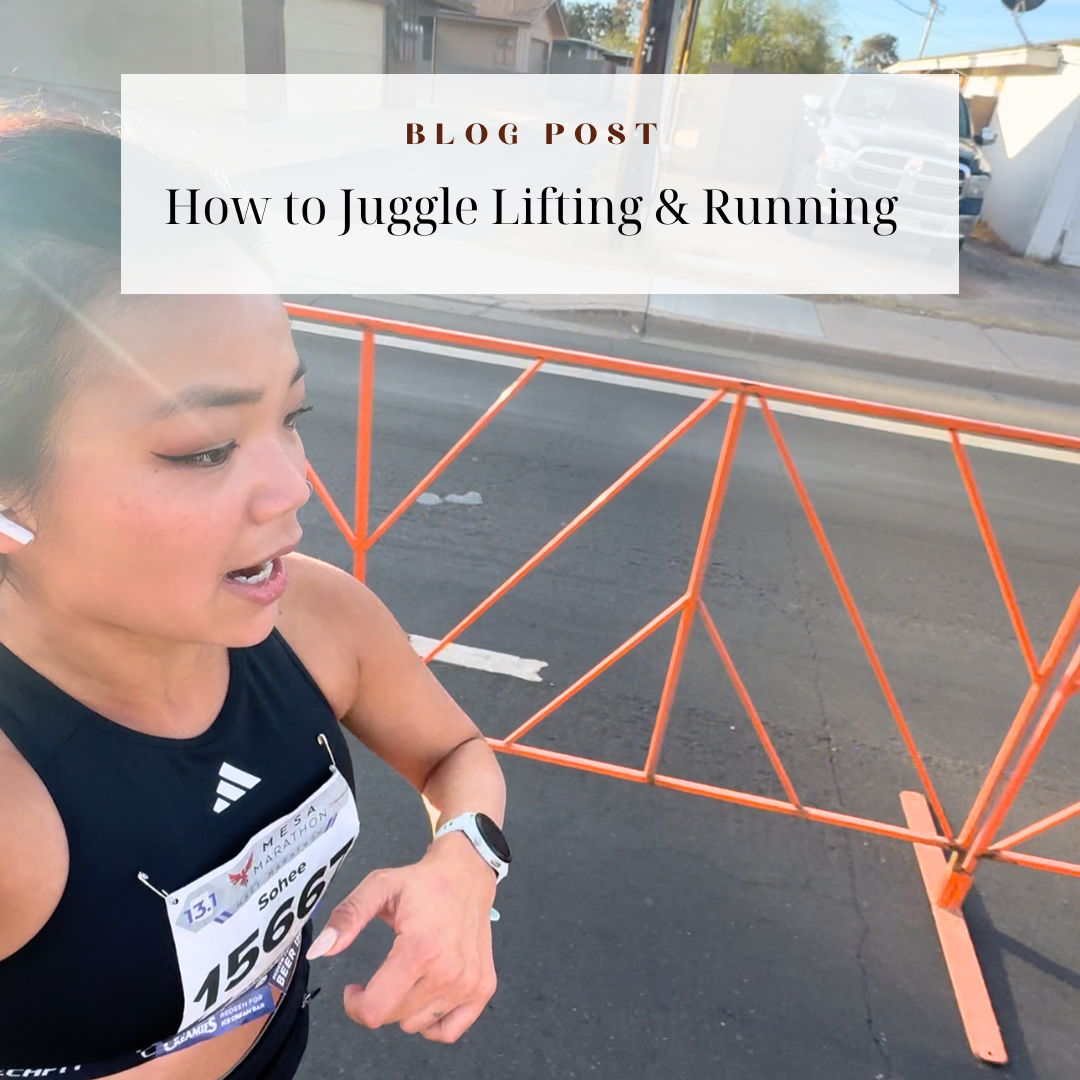How to Train Around an Injury

Sustaining an injury is never fun. You’re in pain, you’re inconvenienced, and perhaps most annoying of all, you lose your stride from working toward your fitness goal.
With a little creativity, however, there are an infinite number of ways to still get in effective workouts at the gym and progress in other ways.
Getting injured does not have to mean the end of your fitness goals. There’s no need to cancel your gym membership, throw your diet out the window, and relegate yourself to the couch for the remainder of your days. While it sucks to be sidelined, this is actually the perfect opportunity to get creative and focus your time and energy on a specialization goal.
Are you hurt? Challenge accepted.
Here’s how to train around an injury.
1. Take inventory of movements that are pain-free and not contraindicated.
Listen to your doctor, first and foremost. Unless you’re in a full body cast with strict orders not to perform any kind of extra physical activity, there’s probably a chance that there’s still some body part(s) that you can work. If you have a broken leg, for example, your upper body is still in commission, right? And if your arm is in a cast, your legs are still perfectly healthy.
General rule of thumb: If it hurts, don’t do it; if it doesn’t, you’re probably okay.
My long-time client (and also long-time assistant!) Lauren Dasher recently incurred a knee injury. Ugh. What does this mean? Most upper body movements should be fine to do, and if I were to take the easy route, I’d have her simply stick to upper body workouts only. But why neglect her lower body when we can be resourceful and still work her glutes a’plenty? There exist a myriad of lower body exercises that involve little to no knee flexion and are consequently pain-free for her. To be sure, here’s what exercises she definitely can’t do:
- squats and squat variations
- lunges and lunge variations
- hip thrusts and hip thrust variations (I had her test out some bodyweight hip thrusts at home and these still induced pain)
But still, that leaves a lot she can do for her lower body:
- Romanian and American deadlifts
- back extensions
- hip abduction movements (lateral walks, monster walks, standing cable/band hip abductions, side-lying hip abductions, etc.)
- cable/band pull-throughs
- straight-leg cable/band glute kickbacks
- reverse hyperextensions
In essence, all straight-leg hip dominant movements.
While her exercise selection is necessarily limited for the time being, this gives us an opportunity to up the ante on the movements that she can perform just fine. Why not get really good at those and give them some extra TLC that they would otherwise never get?

My other client Sarah rolled her ankle running last week and consequently is unable to do any weight-bearing lower body movements. Fortunately, the injury itself is minor and will heal in time with no major lasting repercussions, and while she probably shouldn’t squat or deadlift at this time, there’s still a lot she can do in the interim:
- stability ball/machine leg curls
- leg extensions
- seated band/machine hip abductions
- feet-elevated BW glute bridges
- kneeling band hip thrusts
- virtually all upper body movements
And finally, just because we haven’t addressed an upper body injury, let’s say you’ve broken your arm by tripping over a dog that appeared out of nowhere on the soccer field (this actually happened to a classmate of mine in high school – true story!). You may think that you’re down for the count since you need both your arms to even brace a barbell against your back, but again, a little bit of innovation goes a long way. Here’s just a sampling of exercises you could still do:
- standing 1-arm DB military presses
- 1-arm DB press (flat, incline, floor)
- 1-arm DB/cable rows
- just about all unilateral upper body movements
- single-leg DB Romanian deadlift
- 1-arm KB swings
- 1-arm DB front squats
- bodyweight, band, and single-leg hip thrusts
- leg extensions, leg curls, most lower body machines
- banded glute work (lateral walks, monster walks, seated band hip abductions, etc.)
Is this enough to get sufficient training effect with a properly designed program? Hell yeah.
2. Determine a new training goal.
Okay, so perhaps if you were a few weeks out from a powerlifting meet and you’ve broken your leg, it would make sense to bow out of the event. It sucks, and it’s totally a bummer – I get that. Take a day or two to mope, and then come back with a new goal in mind. You can set a performance goal, an aesthetic goal, or even just a well-being goal.
If your lower body is out, how about you take advantage of this time to finally get really, really good at pull-ups? Perhaps you can build up some mighty lats or hit the double digits you’ve been after for a while.
If you’ve broken your arm, maybe you can really hone in on your glutes and up the ante on working them not just three days a week, but five or even six days a week. Why not? You’ve got the extra time, after all.
Finally, you may have determined that you were pushing it too hard in the gym and it’s been taking up too much bandwidth in your life. Getting sidelined with an injury may just be the wake-up you needed to realize that you’ve been neglecting your relationships, school, and/or work. I’ll be the first to concede that you don’t have to (and shouldn’t) go balls-out in the gym 24/7/365. If this is the case, don’t be afraid to simply workout what you can when you can to feel good, and otherwise shift your focus toward making your spouse, family, job, or grades a priority. Or try out a different physical activity you’ve been meaning to get into all these years but never made the time for (yoga! hiking! rock climbing?). The gym will always be there, after all.
3. Slap together a modified training program.
There are lots of ways to write effective training programs that don’t involve the mainstay squats, deadlifts, and bench presses.
Last year, when my hips started bothering me from squatting too frequently (my body’s anthropometry is simply not suited for high volume squatting), I had to take some time off from the movement. I kept up my deadlift and bench regimen – because I had my first powerlifting meet to train for, after all – but while I let my hip rest up, I simply replaced back squats with Bulgarian split squats, another knee-dominant movement that didn’t involve so much hip flexion.
If you have cranky shoulders, perhaps incline bench press with a neutral grip or even floor presses may feel better for you. If you are unable to deadlift due to a back condition, you can swap it out for hip thrust and glute bridge variations. No big deal.
The most basic training guidelines are as follows:
- Perform the main compound movements first.
- For full body workouts, try to do an upper body push, upper body pull, lower body hip dominant, and lower body knee dominant movement (barring exceptions, of course) – not necessarily in that order.
- Incorporate a variety of rep ranges, typically with longer rest periods for the low-to-medium rep range (let’s say 1-8) and shorter rest periods for the higher rep range.
- Track your workouts to ensure that you are progressing from week to week.
- Keep the goal the goal.
The ins and outs of writing a quality training program are beyond the scope of this article, so the above will have to suffice for now. For the most part, sticking to these principles, even with a lackluster training program, can yield some pretty respectable results provided that you are consistently showing up and doing the work.
Below is the program I wrote up for Lauren and her bum knee. Her primary goal is aesthetic, with strength gains coming in a close second. Her instructions are to take at least one day off in between lifts, so something like a Monday-Wednesday-Friday training schedule would work great. She is to rest as needed in between working sets unless otherwise noted.
Training Day 1: Full Body
A. DB back extension (glute emphasis) 3×10-15
B. DB stiff-legged deadlift 3×10-15
C. Standing cable hip abduction 3x10ea
D. Lateral band walk 3x15ea
E. Standing DB military press 3×8-12
F. Chest-supported DB row 3×8-12
G. Face pull 2×20
Training Day 2: Full Body
A. Bench press 3×3-8
B. Underhand grip lat pulldown 3×3-8
C. Standing DB lateral raise 3×10-15
D. DB pullover 2×10-15
E. Romanian deadlift 3×5
F. BW back extension (glute emphasis) 3×30 // 45s rest
G. Side-lying BW hip abduction 2x30ea
Training Day 3: Full Body
A. Good morning 3×5
B. Chinup 3xAMRAP
C. KB swing 3×20 // 60
D. Incline DB bench press 3×10
E. Pallof press 3x8ea
F1. DB hammer curl 3×10-15
F2. 1-arm DB tricep extension 3×10-15ea
As you can see, there’s plenty of lower body work and ample upper body work in her program to keep her busy. None of the movements bother her, and she’s doing enough in the gym to keep her happy. I also gave her the option of tossing in an extra upper body “bro” day of sorts for when she’s feeling antsy. And if she’s feeling particularly ambitious, she can even do lateral band walks and seated band hip abductions daily since they’re so low-impact.
She’ll stick to this program for a month and diligently record her workouts week after week (hint hint!), after which we’ll re-assess how her knee is doing. If she’s still in pain and not ready for weighted knee flexion, no worries – I can write up another program for her to keep her gains coming.
(If you’d like a custom training program written up by yours truly, I offer that as a one-time service in my online store.)
4. Stop feeling sorry for yourself and make the most of what you’ve got.
Nobody plans on getting injured, but shit happens. You can’t change what’s already happened, but you can absolutely be proactive about what you do about it moving forward.
Are you going to let yourself become a victim and give up altogether? Or are you going to find a workaround and find other ways to get better?
Attitude is everything.




